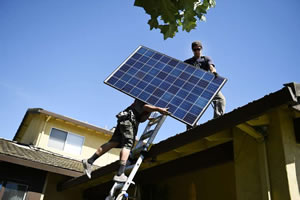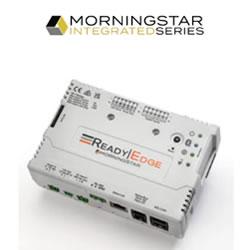Why rising temperatures don't make solar power rise
 Isha Salian for San Francisco Chronicle: Sunny skies sound like a positive for energy production, but this week’s heatwave in California isn’t a boon for solar power.
Isha Salian for San Francisco Chronicle: Sunny skies sound like a positive for energy production, but this week’s heatwave in California isn’t a boon for solar power.
That’s because solar panels actually become less efficient as the mercury rises.
CivicSolar, a solar-power systems distributor with offices in Oakland, Austin, Texas, and Boston, Mass., says high temperatures can decrease a photovoltaic cell’s output by between 10 and 25 percent.
The reason why is illuminating: Photovoltaic cells work when energy-filled photons from the sun activate electrons on the solar panels. The electrons go from a resting state to an excited state, and the cells capture the energy generated from that change in states. At high temperatures, the resting state of the electrons goes up. As a result, the difference between the resting state and excited state is smaller, producing less power.
The effect is more pronounced for homeowners who have installed rooftop solar arrays, since those rarely have built-in cooling.
“If you take a glass solar shingle and lay it on the roof, there’s no air going behind it, so it might get a lot hotter, it might get to 140 or a 160 degrees Fahrenheit,” said Stuart Fox, CivicSolar’s vice president of technical sales.
A study in the United Kingdom found that once a panel heats up above 107 degrees, its output drops by 1.1 percent for every 1.8 degree rise in temperature. Full Article:
Comments (0)
This post does not have any comments. Be the first to leave a comment below.
Featured Product

